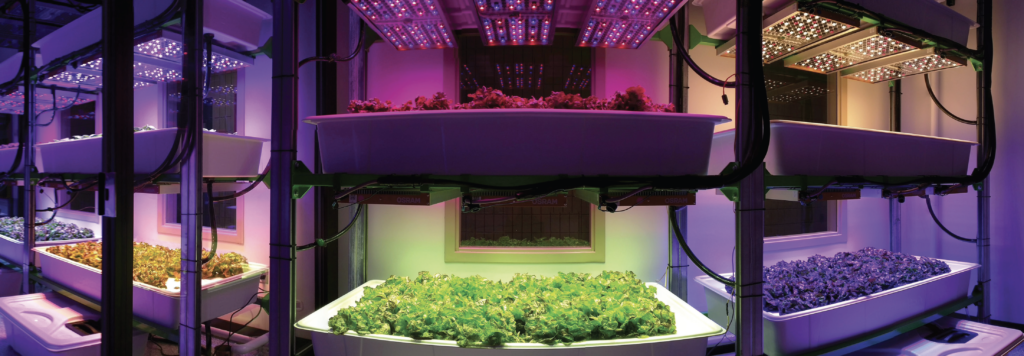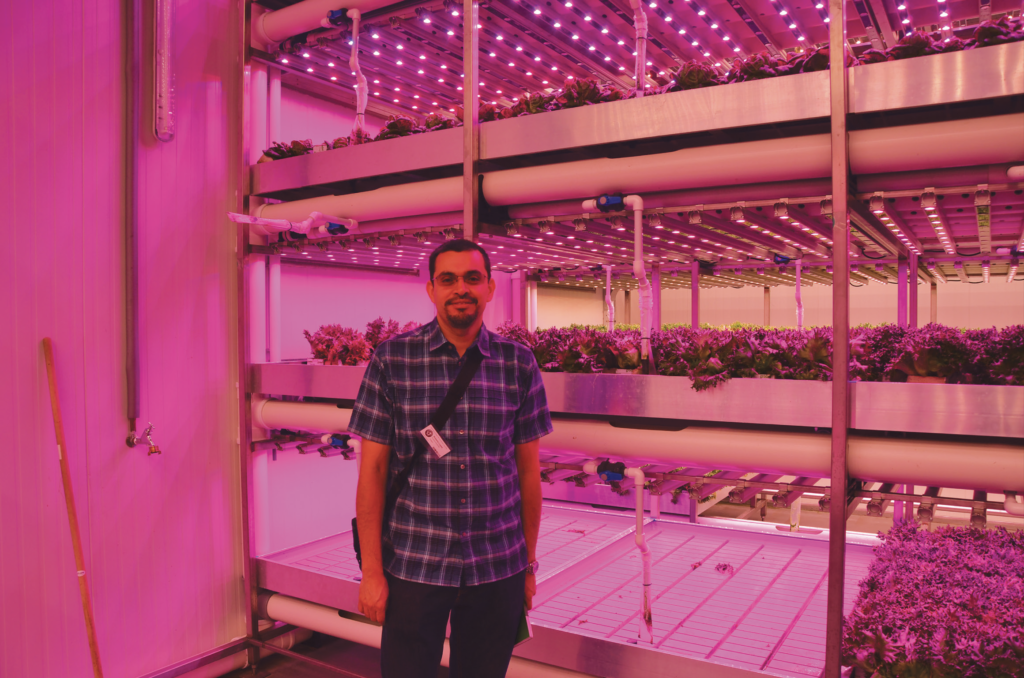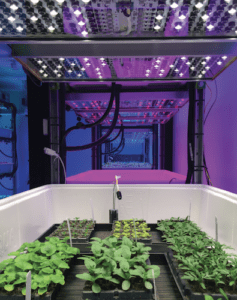

Jul 14, 2021Vertical greens growing trend gets its own USDA grant
The greens growers’ frontier of vertical farms now has USDA support.
A multistate team of university researchers has a four-year USDA specialty crop research initiative (SCRI) grant to study the best practices and economics of indoor growing and how to do it well. Called OptimIA (Optimizing Indoor Agriculture), the project is formally titled “Improving the profitability and sustainability of indoor leafy-greens production.”
Receiving the grant is a sort of coming-of-age moment for a relatively young sector of agriculture.
“To my knowledge, it’s one of the first grants devoted to vertical farming funded by the USDA,” said Michigan State University (MSU) Associate Professor Roberto Lopez, who’s a principal investigator on the project. The SCRI grants have supported greenhouse production proposals and even distributed grants on lighting and LEDs. But OptimIA will deal only with so-called indoor-grown operations that make no direct use of natural light.
Going to the growers


The team of horticulturists, engineers and economists led by MSU has $2.7 million from the USDA in addition to matching funds from the private sector, making it $5.4 million. Work on the four-year grant began in 2020; Lopez said due to pandemic-related disruption, the efforts may continue through 2025.
“It’s a large multidisciplinary project, and one component will involve on-farm trials,” Lopez said. “We want to make sure that our research is going to be able to be used by the industry, so once we have replicated our studies, we’re going to verify them at various indoor farms across the country to make sure that (with) what we’ve found in the lab, that there will be similar results in the industry.”
While growers often focus on increasing yields, and decreasing inputs, energy costs remain unavoidable for indoor growers. Geography can affect the cost of energy, and climate influences the amount of energy needed to control the plants’ indoor environment relative to the weather outdoors, Lopez said.
To remain relevant to growers, the team is limiting its research to main crops grown indoors: red and green lettuce, kale, arugula and microgreens.
A growth industry
The number of indoor farms across the county are growing leafy greens has increased in recent years with the opening of some large, warehouse-type vertical farms in addition to other smaller, modular units set up in shipping containers.


“Indoor farming, which is also known as vertical farming, using LEDs has a lot of advantages,” MSU’s Erik Runkle said in a news release. “It takes much less space, there is a more efficient use of water and nutrients, production is year-round, and there are virtually no pesticides. But there is little science-based information about best growing practices and very little economic data around indoor farming.”
The research will support this young and growing sector of agriculture with public, unbiased information.
“The overarching goal of our SCRI grant is to make the industry more profitable and sustainable,” Lopez said. “Right now, you see a lot of indoor farms, but you know, there’s also been many that have not survived.”
Easy access
Small indoor greens growers often don’t have access to production information.
“Most research that’s conducted for indoor farms is in-house,” Lopez said. “And so, for a new, small venture, it’s pretty difficult, because there’s not a lot of unbiased research-based information out there to get started. And information that is out there is primarily from people wanting to sell products, right? Our goal is science-based, unbiased research.”
Updates on the research, including YouTube videos, research highlights, frequently asked questions, trade articles and scientific papers, are being posted to www.scri-optimia.org as research proceeds.
“We’re also developing an online course on indoor production that will be available on the website within the next year,” Lopez said. “We’re also going to have annual stakeholder meetings and open houses.”
The research team
Principal investigators on the grant include:
Erik Runkle of Michigan State University (MSU) will research the impacts of different light qualities, picking combinations of different wavelengths of light from UV to far-red.
Roberto Lopez, MSU, will research light intensity, carbon dioxide and temperature – how they impact flavor and other postharvest qualities.
Simone Valle de Souza, MSU, will research the economics of managing an indoor leafy greens farm operation, answering questions such as “What are the costs?,” and “How can they add value?”
Chieri Kubota of Ohio State University will research issues relating to tip burn and nutrition.
Cary Mitchell of Purdue University will research “phasic lighting” – tailoring light to the plant’s growth stages.
Murat Kacira of the University of Arizona will research airflow and engineering aspects of
indoor farms.
— Stephen Kloosterman, associate editor
Top of page, the Controlled-Environment Lighting Laboratory (CELL) is a vertical farming research facility developed by Erik Runkle in the Department of Horticulture at Michigan State University. Photos: MSU














